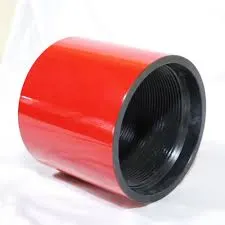- Afrikaans
- Albanian
- Amharic
- Arabic
- Armenian
- Azerbaijani
- Basque
- Belarusian
- Bengali
- Bosnian
- Bulgarian
- Catalan
- Cebuano
- Corsican
- Croatian
- Czech
- Danish
- Dutch
- English
- Esperanto
- Estonian
- Finnish
- French
- Frisian
- Galician
- Georgian
- German
- Greek
- Gujarati
- Haitian Creole
- hausa
- hawaiian
- Hebrew
- Hindi
- Miao
- Hungarian
- Icelandic
- igbo
- Indonesian
- irish
- Italian
- Japanese
- Javanese
- Kannada
- kazakh
- Khmer
- Rwandese
- Korean
- Kurdish
- Kyrgyz
- Lao
- Latin
- Latvian
- Lithuanian
- Luxembourgish
- Macedonian
- Malgashi
- Malay
- Malayalam
- Maltese
- Maori
- Marathi
- Mongolian
- Myanmar
- Nepali
- Norwegian
- Norwegian
- Occitan
- Pashto
- Persian
- Polish
- Portuguese
- Punjabi
- Romanian
- Russian
- Samoan
- Scottish Gaelic
- Serbian
- Sesotho
- Shona
- Sindhi
- Sinhala
- Slovak
- Slovenian
- Somali
- Spanish
- Sundanese
- Swahili
- Swedish
- Tagalog
- Tajik
- Tamil
- Tatar
- Telugu
- Thai
- Turkish
- Turkmen
- Ukrainian
- Urdu
- Uighur
- Uzbek
- Vietnamese
- Welsh
- Bantu
- Yiddish
- Yoruba
- Zulu
China's Casing Coupling Innovations for Enhanced Oil and Gas Industry Efficiency
An Overview of China’s Casing Coupling Industry
Casing couplings are crucial components in the oil and gas industry, serving as connectors between lengths of casing pipes that are used to stabilize boreholes during drilling operations. As the demand for energy continues to grow, particularly in regions with vast reserves, the role of casing couplings becomes increasingly significant. China, being one of the world’s leading producers of casing couplings, has developed a robust industry that caters to both domestic and international markets. This article explores the significance, manufacturing processes, and challenges faced by the casing coupling industry in China.
Significance of Casing Couplings
Casing couplings are essential in ensuring the integrity and safety of oil and gas extraction operations. They provide the necessary mechanical strength to withstand high pressures and temperatures encountered in drilling environments. The reliability of casing couplings directly impacts the efficiency of drilling operations, as failures can lead to costly delays, environmental hazards, and safety risks. Therefore, high-quality couplings made from durable materials are imperative to meet industry standards.
Given the expanding operations of Chinese oil companies such as China National Petroleum Corporation (CNPC) and China Petroleum & Chemical Corporation (Sinopec), the domestic demand for casing couplings has surged. Moreover, China’s Belt and Road Initiative has opened up new markets, further boosting the need for reliable drilling solutions, including casing couplings.
Manufacturing Processes
The manufacturing of casing couplings in China involves several critical steps. The process typically begins with the selection of raw materials, which are usually high-strength steel grades that can endure extreme conditions. Advanced steelmaking processes are employed to enhance the mechanical properties of the raw materials, ensuring that they meet the rigorous specifications required for drilling operations.
Once the steel is prepared, the manufacturing process continues with hot forging, where the steel is heated and shaped into semi-finished products. Precision machining follows, allowing manufacturers to craft couplings with exact dimensions and tolerances. Heat treatment processes such as quenching and tempering are then applied to enhance the strength and toughness of the couplings.
Quality assurance is a paramount aspect of the production process. Manufacturers subject their products to a series of rigorous testing protocols, including pressure testing, fatigue testing, and dimensional inspections, to certify that they can withstand the demanding conditions of oil and gas drilling.
china casing coupling

Innovations and Technological Advancements
In recent years, the Chinese casing coupling industry has embraced technological advancements and innovations aimed at improving product quality and manufacturing efficiency. Automation and robotics have made significant inroads into the production lines, allowing for faster production cycles and reduced labor costs. Additionally, the implementation of digital technologies such as the Internet of Things (IoT) enables real-time monitoring of machinery and production metrics, ensuring that any inefficiencies are promptly addressed.
Research and development (R&D) initiatives are also crucial, as manufacturers strive to produce couplings that are lighter yet stronger, offering enhanced performance and ease of handling on-site. The transition towards environmentally friendly manufacturing processes aligns with global sustainability trends, further solidifying China's position in the casing coupling market.
Challenges in the Industry
Despite its strengths, the casing coupling industry in China faces several challenges. Increased competition from international manufacturers puts pressure on domestic companies to innovate continuously. Furthermore, fluctuations in raw material prices can impact production costs and profit margins.
Environmental regulations are tightening, prompting manufacturers to adopt greener practices, which may require significant investments. Additionally, maintaining a skilled workforce is critical, as the industry demands expertise in both traditional manufacturing techniques and modern technological applications.
Conclusion
China’s casing coupling industry plays a pivotal role in the global energy sector, driven by domestic needs and burgeoning international markets. Through a combination of advanced manufacturing techniques, rigorous quality controls, and innovative practices, China has positioned itself as a key player in the production of casing couplings. However, the industry must navigate various challenges while continuing to evolve in response to market demands to maintain its competitive edge. The future looks promising as China continues to enhance its capabilities in the oil and gas sector, with casing couplings remaining a cornerstone of industry operations.
-
Tubing Pup Joints: Essential Components for Oil and Gas OperationsNewsJul.10,2025
-
Pup Joints: Essential Components for Reliable Drilling OperationsNewsJul.10,2025
-
Pipe Couplings: Connecting Your World EfficientlyNewsJul.10,2025
-
Mastering Oilfield Operations with Quality Tubing and CasingNewsJul.10,2025
-
High-Quality Casing Couplings for Every NeedNewsJul.10,2025
-
Boost Your Drilling Efficiency with Premium Crossover Tools & Seating NipplesNewsJul.10,2025







